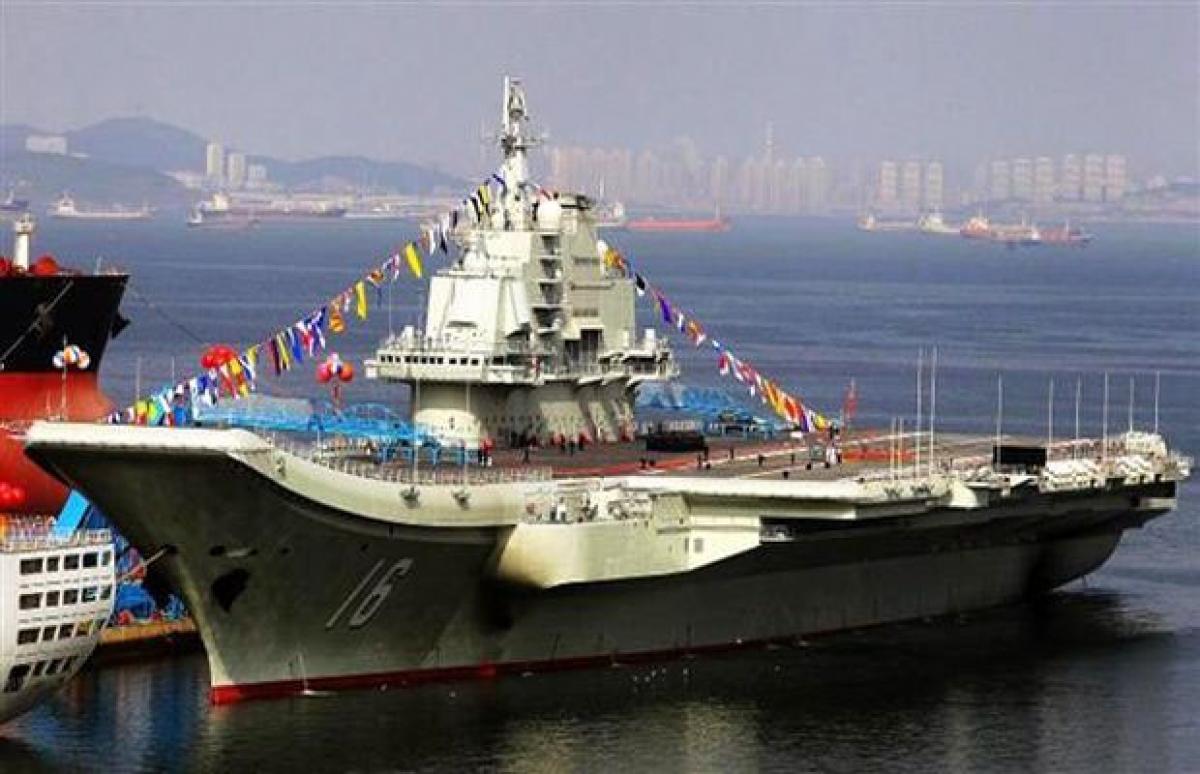Live
- Avoid challenging constitutional institutions: VP Dhankhar
- Maha polls: BJP hurls questions at INDIA bloc amid Ulema Board's conditional support to MVA
- Regional rural banks must empower MSMEs via flagship govt schemes: FM Sitharaman
- Jemimah Rodrigues credits backing from Brisbane Heat teammates for classy 61-run knock
- Stalin in Virudhunagar district as part of statewide tour to monitor govt schemes
- BJP's politics of development immensely benefitted Muslims in last 10 years: Sarbananda Sonowal
- BRIC to drive research synergy, transform power of science, tech & innovation: Centre
- Train services remain disrupted in some NE states due to railway track damage
- ISL 2024-25: Chennaiyin FC, Mumbai City share spoils in milestone 1000th league game
- Keshav Chandra takes oath as NDMC chairman
Just In

China\'s second aircraft carrier, which is now under construction, will focus more on military operations training and technological experiments to improve its defence systems as the 2.3 million strong People\'s Liberation Army (PLA) undergoes massive revamp.
China's second aircraft carrier, which is now under construction, will focus more on military operations training and technological experiments to improve its defence systems as the 2.3 million strong People's Liberation Army (PLA) undergoes massive revamp.
"This aircraft carrier will have different missions than those for the Liaoning (the country's first aircraft carrier)," said Senior Captain Zhang Junshe with the People's Liberation Army Naval Military Studies Research Institute.
"We use the (the first carrier) Liaoning to test the reliability and compatibility of systems on carriers, and to train personnel. The second carrier will mainly do what a genuine aircraft carrier is supposed to do: running combat patrols and delivering humanitarian aid. Liaoning, which was refurbished after its hull was bought from Ukraine is in operation since 2013," Zhang was quoted as saying by the official People's Liberation Army Daily.
Zhang said China urgently needs a second carrier, as the country is seeking to improve its defence systems and safeguard national interests. "The PLA needs at least three aircraft carriers. When it does, one can be on duty, one can train personnel, and the third can receive maintenance," he said.
China's second aircraft carrier is under construction in the coastal city of Dalian, Liaoning province, Defence Ministry spokesman Yang Yujun told media last week.
The new carrier has been designed in China and will have a displacement of 50,000 metric tons, a conventional power system, and will carry domestically developed J-15 fighter jets and other ship-borne aircraft, Yang said. The ship will use a ski jump mode for launching fixed-wing aircraft, the same as the Liaoning, he added.
Zhang said the new carrier's three major systems-power and propulsion, electronic systems and weapons-will all be developed by China and will have better capabilities than those on the Liaoning. He said China will consider developing a nuclear-powered aircraft carrier after it gains enough experience in operating such large vessels.
As it is set to expand the fleet of aircraft carriers, Chinese defence experts said the PLA need to need to make significant changes following last week's upgradation of the status of the Missile force to the equal status of army, navy and airforce.
The PLA has re-designated its missile force renaming it as Rocket Force(PRF) and formed a support wing the PLA Strategic Support Force (SSF) to provide electronic and cyber surveillance. The experts said the PLA will need to set up inter-services platforms and more universal hardware to improve its combat readiness.
Wang Ya'nan, deputy editor-in-chief of Aerospace Knowledge magazine, said, "President Xi has repeatedly stressed the importance of information and joint operation capabilities, which I believe are pillars to winning modern warfare. So, the PLA should give priority to developing an inter-services command and logistics system."
He said the PLA Army, Navy, Air Force and PRF currently have their own platforms to handle information, manoeuvre units and arrange logistics. Wang said these separate platforms should be integrated to allow a smoother command chain. He also suggested that a universal early-warning and control system and long-range transporter aircraft are needed for all services, rather than just the air force.
Wang said large planes like the Y-20, which made its maiden flight in January 2013, and which developers expect to deliver to the PLA soon, will make troop deployment easier, enabling the military to act more promptly and to better respond to emergencies.
He said the army, the PLA's largest branch, should develop a next-generation main battle tank, which he proposed should be highly automated and have better information capability than the current Type-99A tank, state run China Daily reported.
Cao Weidong, a researcher at the PLA Naval Military Studies Research Institute, said that for the army, air force, navy and missile forces to act in concert with each other, more military satellites will be needed as they will play an increasingly important role in obtaining information and transmitting directives among different fighting units.
"The air force and navy will need more equipment that can perform or support long-range operations.For instance, the navy will need amphibious assault ships, large supply vessels and advanced guided missile destroyers, while the air force will pursue long-range refueling aircraft," he said.
Wu Peixin, a military observer in Beijing, said the PLA should develop new individual smart weapons and portable logistics devices, which will strengthen each soldier's combat capability.
Chen Xuesong, a fellow researcher at the Studies Research Institute, said he believes the new carrier, which is being constructed in sections to be assembled later, will be a tough challenge for Chinese engineers.

© 2024 Hyderabad Media House Limited/The Hans India. All rights reserved. Powered by hocalwire.com







